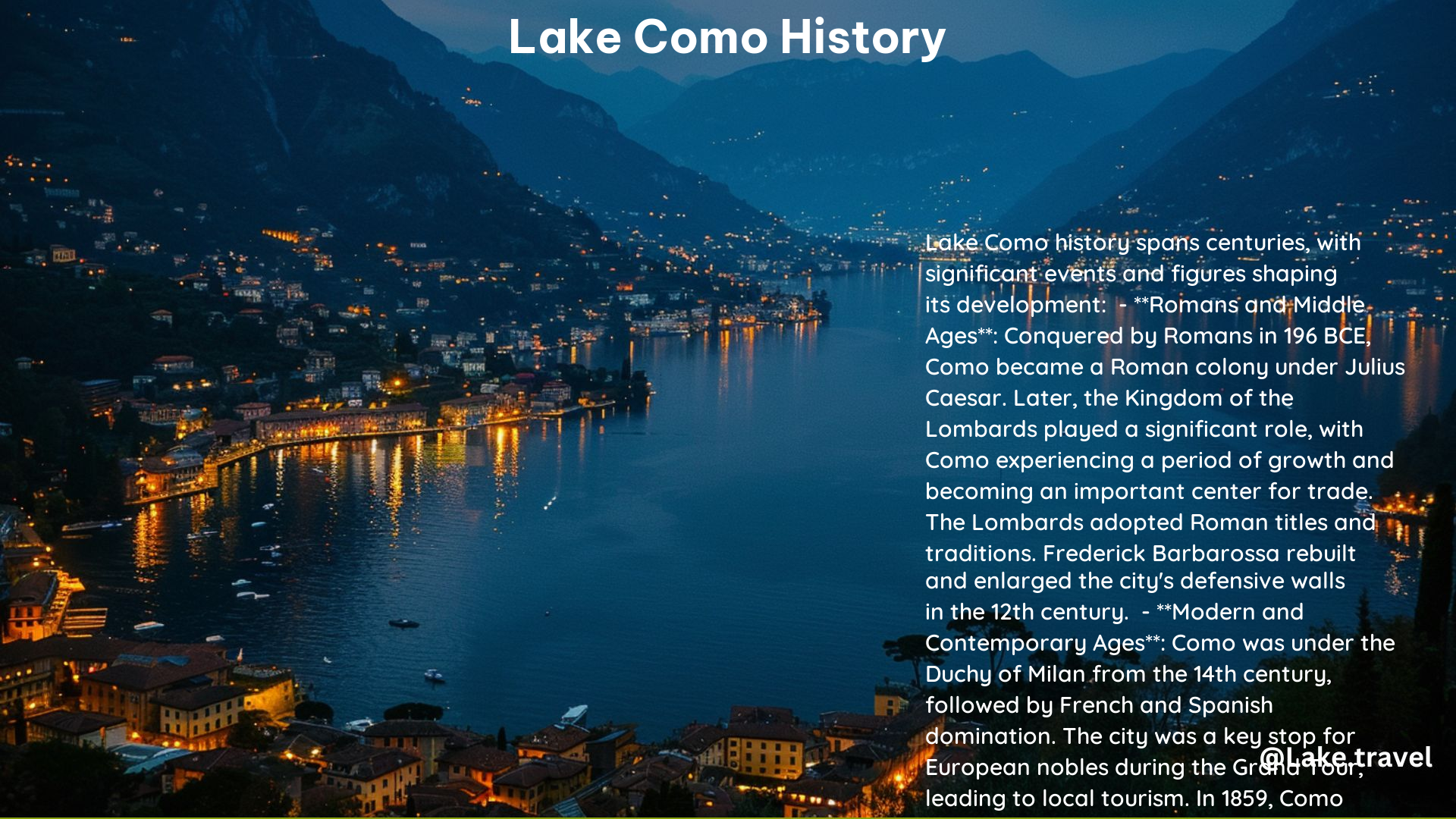Lake Como, nestled in the northern region of Italy, is a breathtaking destination that has captivated visitors for centuries. With its glacial origins, rich Roman heritage, and enduring cultural significance, the history of this iconic lake is as diverse as the stunning landscapes that surround it.
Glacial Formation and Geographical Wonders
Lake Como’s distinctive “Y” shape was formed during the last Ice Age, approximately 10,000 years ago. As the massive glaciers retreated, they carved out the lake’s impressive depth, making it the deepest lake in Europe at 410 meters (1,345 feet). Covering an area of 146 square kilometers (56 square miles), Lake Como is the third-largest lake in Italy, offering visitors a vast expanse of natural beauty to explore.
Roman Influence and Prosperity

During the Roman occupation, Lake Como played a significant role in the region’s trade and commerce. The town of Como, known as Novum Comum at the time, was an important hub, connected by the Via Regina, a major Roman road. The lake, referred to as Larius during this period, became a thriving center of craftsmanship, with the Magistri Comacini, a master builder’s guild, gaining prominence.
The Middle Ages and Renaissance Resurgence
After the fall of the Roman Empire, Lake Como came under the influence of the Duchy of Milan and the Kingdom of the Lombards. While the area experienced periods of growth and destruction, the Renaissance era brought a renewed cultural and artistic flourishing. Lake Como attracted renowned figures such as Leonardo da Vinci, Johann Wolfgang Goethe, Stendhal, and Henry Wadsworth Longfellow, who were inspired by the lake’s captivating beauty.
Unification with Italy and Modern-Day Tourism
In 1859, Lake Como became part of the Kingdom of Italy under the House of Savoy, following Giuseppe Garibaldi’s defeat of the Austrians. Today, the lake’s economy is primarily driven by tourism, with visitors drawn to its stunning villas, palaces, and the region’s rich cultural heritage. The area is also known for its thriving silk industry and furniture design.
Cultural Significance and Artistic Inspiration
Lake Como’s cultural significance is evident in its numerous famous villas, such as Villa Carlotta, Villa Melzi, and Villa del Balbianello, which have become iconic landmarks and attract thousands of visitors each year. The lake’s natural beauty has also inspired countless literary and artistic works, cementing its status as a muse for creative minds throughout history.
Conclusion
The history of Lake Como is a captivating tapestry of natural wonders, cultural heritage, and artistic inspiration. From its glacial origins to its Roman legacy, the lake’s enduring allure has drawn visitors and luminaries alike, making it a truly remarkable destination in the heart of Italy. Whether you’re a history buff, a nature enthusiast, or simply seeking a breathtaking escape, Lake Como’s rich past and present offer a truly unforgettable experience.
References:
- https://www.propertyatlakecomo.com/eng/pagina/como-and-surroundings/1466834875/lake-como-italy
- https://www.ultissimo.com/history-lake-como/
- https://en.wikipedia.org/wiki/Lake_Como
- https://www.britannica.com/place/Como-Italy
- https://lakecomotravel.com/como-history/
